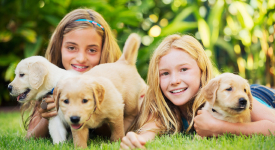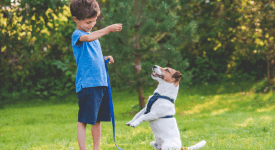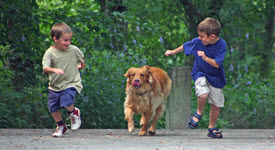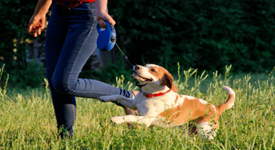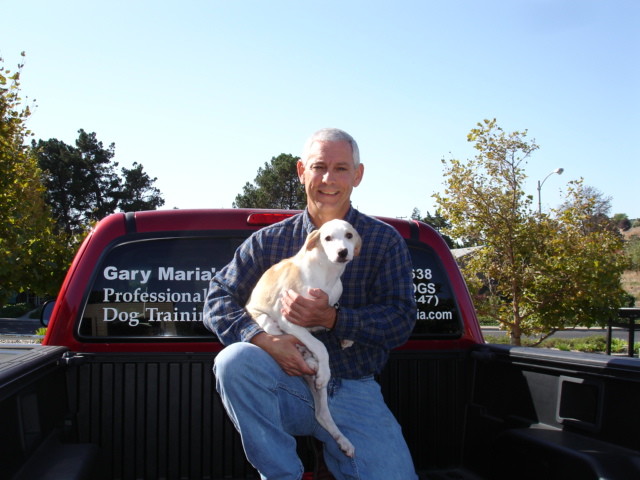1. Do not ask your dog to do a behavior if you can not enforce it within 1.5 seconds. At the beginning, a leash must be on the dog to enforce commands which is why basic on-leash obedience is critical. Basic obedience is the foundation on how to communicate with your dog prior to moving to more advanced training. Also never ask your dog to come to you if you cannot enforce the behavior, It will show the dog your weaknesses.
2. When in public people tend to believe they must keep their dog in the heel position. This is a very old theory. First of all I think we all tend to agree dogs have very short attention spans. Trying to make a dog stay in the heel position could actually tax the nervous system (make the dog over-think) versus teaching the dog to walk on a loose leash and check-in. This is much more natural for the dog and less stressful for the owner. Remember, we always see more people and dog aggression on tight leashes because we have taken their flight instant away from them. Keep the leash a bit loose.
3. In a pack of dogs there is the pack leader down to the lowest submissive dog. There is no grey area to a dog. If you are not the a dog’s pack leader then the dog is your leader. This has nothing to do with how the dog loves you. Love and respect are two different things. You will not establish yourself as a pack-leader by being aggressive, You will become pack-leader through communication and being consistent; mean what you say and say what you mean.
4. The number one reason why I deal with behavior modification for fear-based aggression is the dog was not socialized properly as a younger puppy. Often we are told to not take our dogs out until they had their forth series of shots, The problem with this is the forth shot is given at 16 weeks of age, At 16 weeks of age our dog’s socialization window is shutting. At 24 weeks of age, the socialization window is shut and it cannot be reopened.
When socializing a 10 week old pup who had their second series of shots we must be over cautious on how we socialize. We must protect our puppies not only physically, but just as importantly, mentally. If you do not protect them and they have a bad experience it could effect them for their lifetime. This is the second most common reason I do behavior training for aggression; we did not protect our dogs physically or mentally.
5. A dog’s eyesight is nothing like ours; their number one sense is their nose. Dogs process most of their information through their noses (olfactory glands), so when outside we must allow our dogs this normal function so they are comfortable on their walks.
6. Due to a puppy’s weak nervous system we should not correct puppies under 16 weeks of age. You would not scold a 3 month old human baby because they would not understand, It’s the same with a young dog. What will happen is the puppy will learn how to mistrust and fear you. What we need to do is give the puppy information and make it fun, to create positive associations.
7. Dogs are social pack animals. Do not isolate a dog (leave alone) for an extended period of time. From being a behavior specialist for four different animal shelters and SPCA’s over the last 40 years, I believe isolation is a big reason why dogs are brought to our shelters due to the dog becoming bored and frustrated.
8. When starting to teach your dog to sit-stay, the worst place to try and teach this is when answering the door. I have been to thousands of homes over the years and can count on one hand how many dogs I have seen as untrained dogs sit-stay while they are letting me in the door vs. seeing thousands of dogs told to sit-stay as they open the door, and the dog springs up to greet me. The behavior is not enforced. Start by having the dog sit-stay at a distance from the door and strengthen the behavior and slowly come closer to the door, letting the dog be successful.
9. One of the biggest mistakes I see is when teaching sit-stay, is we tell our dog to stay but the owner will often walk away from the dog, and then turn around and call for the dog. The dog then anticipates it will be called and when the owner moves, the dog thinks it is being called, when that is not the owner’s intention.
This is the pattern we our creating. So when you walk away from your dog they are anticipating you are going to call them to you.
With the slightest movement from your body, the dog will take this as a signal to come to you and respond and as soon as this happens we start telling them “no” and to stay; hence a conflicted dog!
My rule is I take one step away and then I take one step back to where I started, before I release the behavior. Then 50 steps away, 50 steps back in, then release. After 45 days with the proper training, your sit-stays should be stable.
10. If you are going to allow your dog to visit with new dogs while on your walk I might suggest implementing the 3 second rule. Let them greet for 3 seconds – then move on. Let’s create safe space for our dogs. New dog introductions should be taken slowly so their is no negative encounter. Of course there are exceptions if you are lucky enough to have a very social dog and meet another just like yours.
